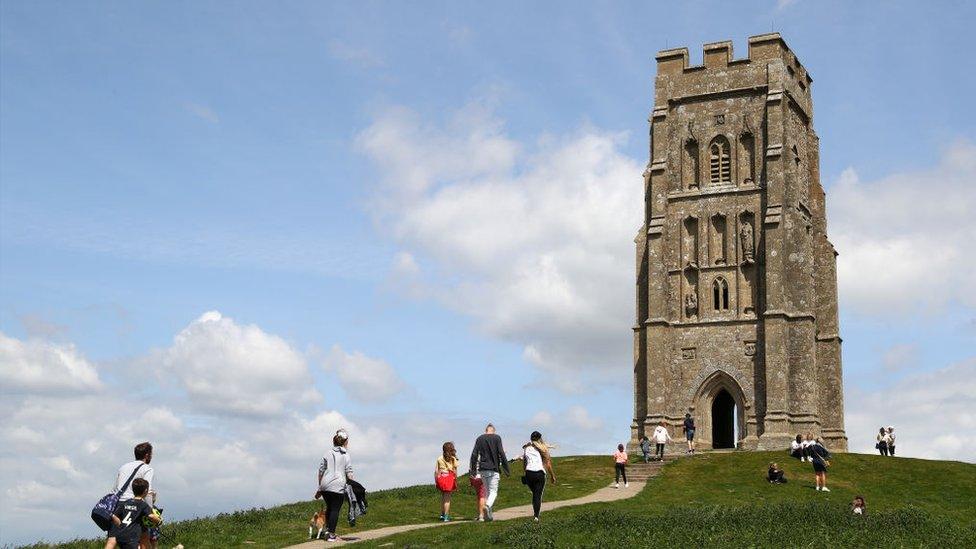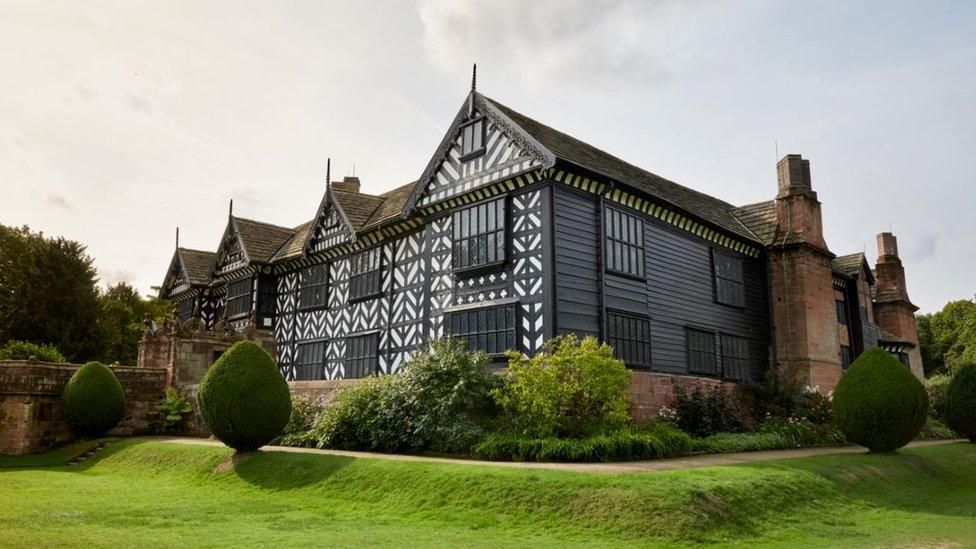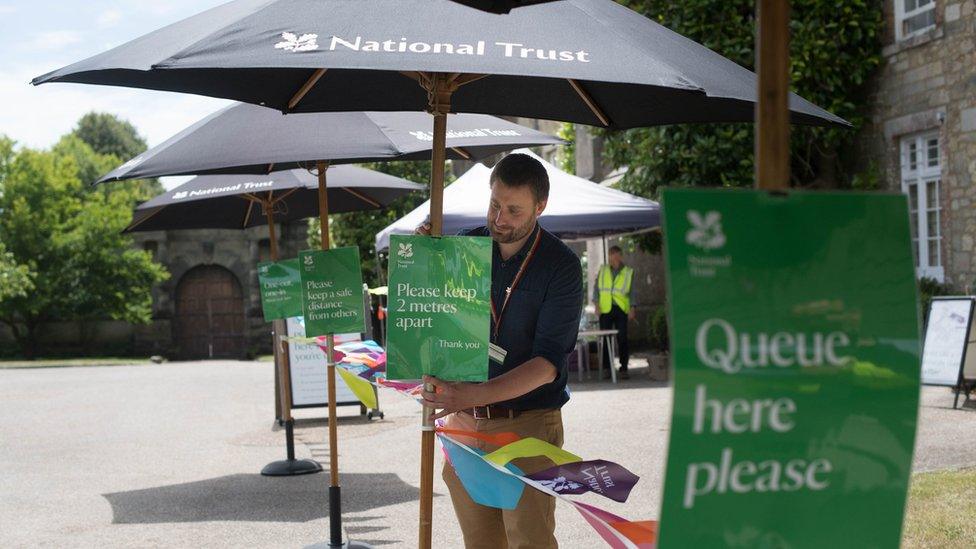National Trust details colonialism and slavery links
- Published

Glastonbury Tor, in Somerset, which was found to have links to to successful compensation claims as a result of the abolition of slavery
The National Trust has revealed how more than 90 of its properties have connections to slavery and colonialism.
The links - at 93 properties - are highlighted in a report commissioned by the charity to tell the history of colonialism and slavery at its sites.
Some, like Penrhyn Castle in north Wales, show how wealth derived from slavery was used for reconstruction.
The charity has said it is committed to sharing the histories of slavery and colonialism.
It has also pledged to add to its research, and admitted that it has more work to do.
John Orna Orenstein, its director of culture and engagement, said it was about raising awareness.
He said: "Just to be really clear, we're not making judgements about the past, what we're trying to do is reflect as accurately and comprehensively as we can the histories across a variety of places."
The National Trust is a conservation charity in England, Wales and Northern Ireland. There is a separate and independent National Trust for Scotland,
The report details links to plantation owners and those who were paid compensation for enslaved people freed through abolition, as well as those who gained their wealth through the slave trade.
It also includes properties with connections to people involved in colonial expansion, including leading figures in the East India Company, or senior figures in administering colonies, including Winston Churchill's home Chartwell.
And those with important cultural links to Britain's colonial history, such as writer Rudyard Kipling's home in Sussex, Bateman's, or the home of historian Thomas Carlyle in London are highlighted.

The National Trust report shows how estates and stately homes such as Clandon Park, Surrey, and Hare Hall in Cheshire were linked to wealth from plantations or the slave trade.
Some 29 properties cared for by the National Trust have links to successful compensation claims as a result of the abolition of slavery, such as Glastonbury Tor in Somerset, and Blickling Hall, Norfolk, the report shows.
Quarry Bank Mill, Cheshire, was built using family wealth related to slavery, while Bath Assembly Rooms was connected to the wider colonial and slavery economies of the 18th Century, it highlights.
Powis Castle in Wales, with its links to Clive of India, and Cragside, Northumberland, which was home to Sir William Armstrong who supplied guns to British military forces, are among those with imperial links.
The survey also documents those National Trust properties belonging to people who were involved in the abolition movement or the fight against colonial oppression.
And it highlights the presence of African and Asian people working on English and Welsh estates.
The report draws on the trust's own archives and external evidence such as the Legacies of British Slave-ownership project run by University College London.
Dr Tarnya Cooper, the National Trust's curatorial and collections director, said a "significant" number of the properties in the charity's care have links to the colonisation of different parts of the world, and some to historic slavery.
"Colonialism and slavery were central to the national economy from the 17th to the 19th Centuries," she said.
She added that it was the charity's job, as a heritage charity, to research, interpret and openly share full and up-to-date information about its properties.
"This report is the fullest account to date of the links between places now in the care of the National Trust and colonialism and historic slavery," she said, though she added it was not exhaustive and would be added to as more research was done.
The research has been used to update online information and will be used to help the Trust review visitor information and displays at properties.
- Published20 September 2020

- Published29 July 2020
